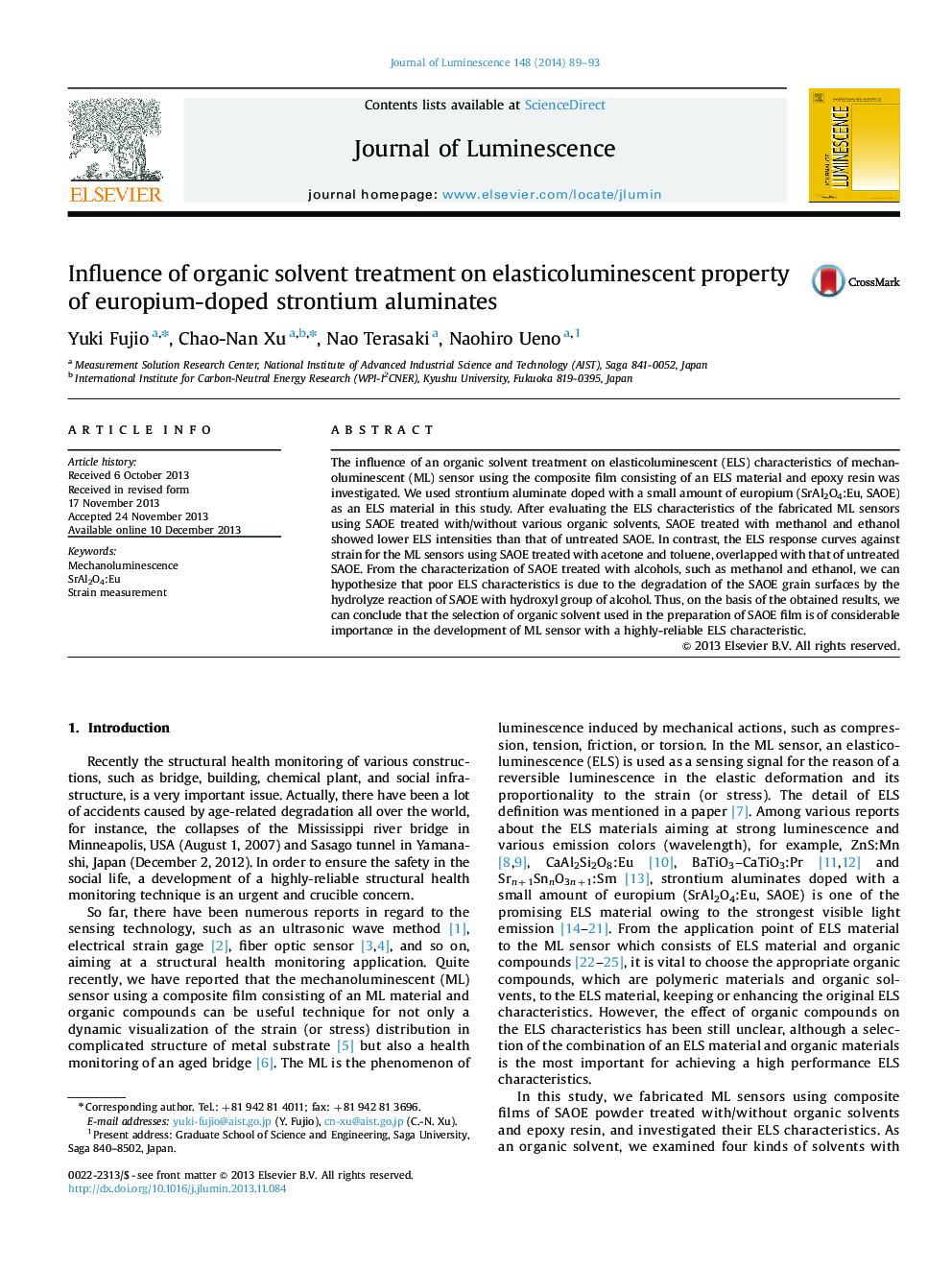| Article ID | Journal | Published Year | Pages | File Type |
|---|---|---|---|---|
| 5400531 | Journal of Luminescence | 2014 | 5 Pages |
Abstract
The influence of an organic solvent treatment on elasticoluminescent (ELS) characteristics of mechanoluminescent (ML) sensor using the composite film consisting of an ELS material and epoxy resin was investigated. We used strontium aluminate doped with a small amount of europium (SrAl2O4:Eu, SAOE) as an ELS material in this study. After evaluating the ELS characteristics of the fabricated ML sensors using SAOE treated with/without various organic solvents, SAOE treated with methanol and ethanol showed lower ELS intensities than that of untreated SAOE. In contrast, the ELS response curves against strain for the ML sensors using SAOE treated with acetone and toluene, overlapped with that of untreated SAOE. From the characterization of SAOE treated with alcohols, such as methanol and ethanol, we can hypothesize that poor ELS characteristics is due to the degradation of the SAOE grain surfaces by the hydrolyze reaction of SAOE with hydroxyl group of alcohol. Thus, on the basis of the obtained results, we can conclude that the selection of organic solvent used in the preparation of SAOE film is of considerable importance in the development of ML sensor with a highly-reliable ELS characteristic.
Related Topics
Physical Sciences and Engineering
Chemistry
Physical and Theoretical Chemistry
Authors
Yuki Fujio, Chao-Nan Xu, Nao Terasaki, Naohiro Ueno,
